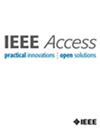Automatic Recognition of Illegal Substations by Employing Logit-Boost Algorithm and LSTM With the Help of Different Landsat-8 OLI Image Spectral Band Parameters: A Case Study in Sason, Turkey
IF 3.4
3区 计算机科学
Q2 COMPUTER SCIENCE, INFORMATION SYSTEMS
引用次数: 0
Abstract
Automatic recognition of illegal substations is of great importance, since most of the leakage electricity in Turkey is due to the use of these substations in agricultural fields. One of the most effective ways to detect illegal substations is to employ remote sensing images and machine learning techniques together. Because, thanks to remote sensing images, it is possible to analyze illegal substations on huge agricultural lands in a short time. In this study, illegal substations on the agricultural fields in the southeast Anatolian region, which is one of the regions where leakage electricity are most common, have been detected with the aid of Landsat-8 OLI images and machine learning algorithm. The proposed study has been carried out in several stages, respectively. In the first stage, the locations of 42 substations and 21 non-substation objects on the pilot area have been recorded with the help of GPS and these coordinates have been later transferred to the Landsat-8 OLI image dated on 14 June 2019. In the second stage, an image analysis has been performed by calculating the spectral band parameters from the Landsat-8 OLI images. In the next stage, relationships among illegal substations and non-substation objects have been set by utilizing the statistical metrics of obtained spectral band parameters. In the last stage, by utilizing LSTM (Long Short-Term Memory) method, which is a recurrent neural network model that has gained popularity in both remote sensing and various scientific disciplines in recent years and the Logit-Boost method, which is one of the popular boosting machine learning algorithms, automatic recognition of substations has been performed with an average accuracy of 88.89% for Logit-Boost method and 84.21% for LSTM method. It is notable from this study that the Logit-Boost Algorithm yields more proficient results than the LSTM model.利用Logit-Boost算法和LSTM在不同Landsat-8 OLI图像谱带参数的帮助下自动识别非法变电站——以土耳其萨松为例
自动识别非法变电站非常重要,因为土耳其的大部分漏电都是由于这些变电站在农田中的使用。检测非法变电站最有效的方法之一是将遥感图像和机器学习技术结合起来。因为,多亏了遥感图像,可以在短时间内分析巨大农田上的非法变电站。在本研究中,借助Landsat-8 OLI图像和机器学习算法,对安纳托利亚东南部地区农田上的非法变电站进行了检测,该地区是漏电最常见的地区之一。拟议的研究分别分几个阶段进行。在第一阶段,在全球定位系统的帮助下,记录了试点地区42个变电站和21个非变电站物体的位置,这些坐标后来被转移到2019年6月14日的陆地卫星8号OLI图像中。在第二阶段,通过计算Landsat-8 OLI图像的光谱带参数进行了图像分析。在下一阶段,通过利用所获得的谱带参数的统计度量,已经设置了非法变电站和非变电站对象之间的关系。在最后阶段,通过利用LSTM(长短期记忆)方法和Logit-Boost方法,LSTM方法是近年来在遥感和各个科学学科中都很流行的递归神经网络模型,Logit Boost方法是流行的Boost机器学习算法之一,对变电站进行了自动识别,Logit-Boost方法和LSTM方法的平均准确率分别为88.89%和84.21%。从这项研究中值得注意的是,Logit-Boost算法比LSTM模型产生了更熟练的结果。
本文章由计算机程序翻译,如有差异,请以英文原文为准。
求助全文
约1分钟内获得全文
求助全文
来源期刊

IEEE Access
COMPUTER SCIENCE, INFORMATION SYSTEMSENGIN-ENGINEERING, ELECTRICAL & ELECTRONIC
CiteScore
9.80
自引率
7.70%
发文量
6673
审稿时长
6 weeks
期刊介绍:
IEEE Access® is a multidisciplinary, open access (OA), applications-oriented, all-electronic archival journal that continuously presents the results of original research or development across all of IEEE''s fields of interest.
IEEE Access will publish articles that are of high interest to readers, original, technically correct, and clearly presented. Supported by author publication charges (APC), its hallmarks are a rapid peer review and publication process with open access to all readers. Unlike IEEE''s traditional Transactions or Journals, reviews are "binary", in that reviewers will either Accept or Reject an article in the form it is submitted in order to achieve rapid turnaround. Especially encouraged are submissions on:
Multidisciplinary topics, or applications-oriented articles and negative results that do not fit within the scope of IEEE''s traditional journals.
Practical articles discussing new experiments or measurement techniques, interesting solutions to engineering.
Development of new or improved fabrication or manufacturing techniques.
Reviews or survey articles of new or evolving fields oriented to assist others in understanding the new area.
 求助内容:
求助内容: 应助结果提醒方式:
应助结果提醒方式:


